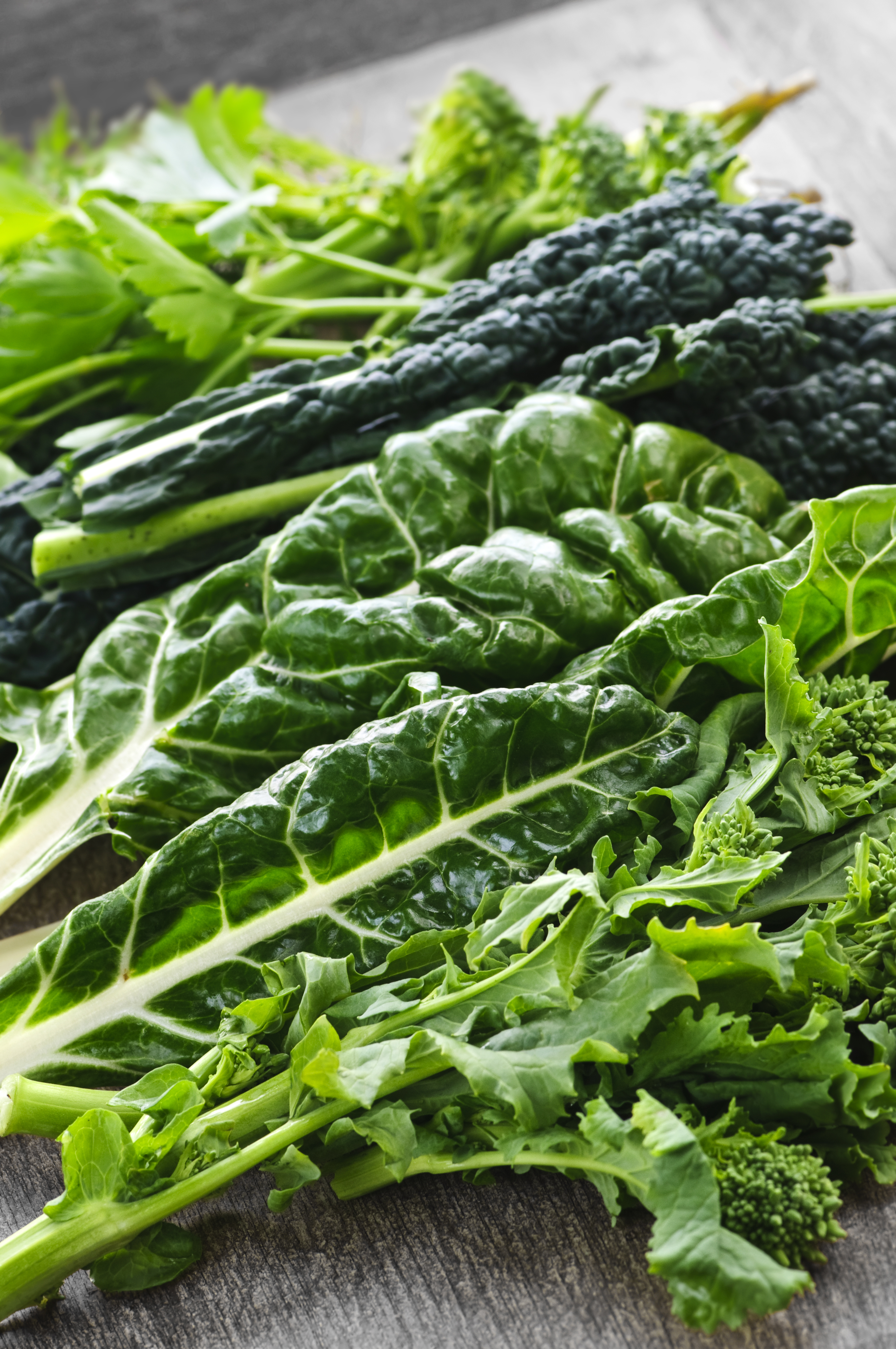Dark Green, Red, and Orange Vegetables

Why should we eat dark green vegetables?
Dark green vegetables are rich in vitamins A, C, and K, and folate. These nutrients protect bones, decrease inflammation, help with vision, improve immunity, and protect against some types of cancers. Some of these vegetables are good sources of Vitamin E, which is also important for immune health and protection against heart disease.
Dark green vegetables
- Bok Choy
- Broccoli
- Collard Greens
- Dark Green Leafy Lettuce
- Kale
- Mustard Greens
- Romaine Lettuce
- Spinach
- Watercress
How much should we eat?
The Dietary Guidelines for Americans recommends eating 1 1/2 cups of dark green vegetables per week. Rather than trying to eat it all in one meal, try dividing it into 1/2 cups servings 3 times per week. This way you can also include other colors of vegetables, keeping your plate looking more like a rainbow!
One hald cup of dark green vegetables equals:
- 1 cup raw, dark leafy vegetables
- 1/2 cup cooked greens
- 1/2 cup cooked broccoli

Why should we eat red and orange vegetables?
Red and orange vegetables are high in beta carotene, which the body turns into vitamin A. Vitamin A helps protect against infection and some types of cancer. Many of these vegetables also have high levels of vitamin C, potassium, and vitamin K. Vitamin C promotes healing, potassium can lower blood pressuree, and vitamin K helps with blood clotting.
Red and orange vegetables
- Acorn Squash
- Butternut Squash
- Carrots
- Hubbard Squash
- Pumpkin
- Red Bell Peppers
- Sweet Potatoes
- Tomatoes
How much should we eat?
The recommended intake for red and orange vegetables is 5 1/2 cups per week. Try dividing this into multiple servings as well!
One half cup of red and orange vegetables equals:
- 1/2 cup cooked and mashed acorn or butternut squash
- 6 baby carrots or 1 medium carrot
- 1/2 of a large red pepper
- 1/2 of a large sweet potato
- 1/2 of a large tomato
Featured Recipes
Spinach and Pepper QuesedillasSprinkle half of cheese and bell peppers on one half of each tortilla. Add half of spinach to each tortilla. Fold tortillas in half.Heat large skillet over medium heat until hot. Put the folded tortillas in skillet and heat for 1-2 minutes on each side or until golden brown. |
 |
Pumpkin PancakesPreheat griddle or frying pan over medium heat.In large bowl, beat together eggs, milk, pumpkin, and oil.Add flours, sugar, baking powder, salt, and spices; mix until moistened. (Batter will be thick.)For each pancake, pour 1/4 cup batter onto hot griddle. Use a spatula to spread batter into 4-inch circle before mixture sets.Cook until surface bubbles and appears dry. Turn; continue cooking 2 to 3 minutes.Serve with optional toppings. |
 |
Cheesy Pasta with Summer VegetablesWash and prepare vegetables. Cook pasta according to package directions. Drainwater from cooked pasta and save 1/4 cup of water. 3) Heat oil in a large skillet as pasta cooks. Add garlic andonion to skillet. Sauté over medium heat about 1-2 minutes or until soft. Add any uncooked hard vegetables and cook for 3minutes. Add soft vegetables and continue to cook. Add Italian seasoning, salt, and pepper. Add tomatoes last and cook until warm.Add cooked drained pasta to the vegetables. Add a little of the water from the pasta if needed.Add cheeses to mixture. Stir until cheese is mostly melted.Serve immediately. |
 |

 You may require
You may require